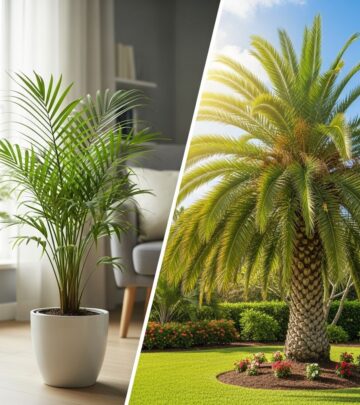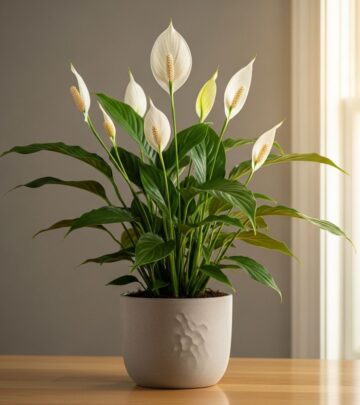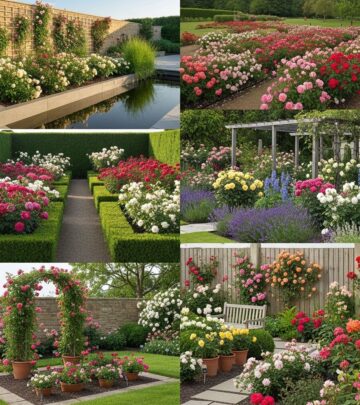Unveiling Goth Gardening
Transform any outdoor nook into a sanctuary with hidden pathways and dark-hued plants.

Introduction to Goth Gardening
Goth gardening, also known as Gothic gardening, is a unique style of gardening that allows individuals to embrace their darker, more mysterious side. This aesthetic is inspired by the Victorian era and is not limited to any particular season or garden size. Whether you have a large garden or just a small deck, you can incorporate elements of Goth gardening to transform your outdoor space.
What is Goth Gardening?
Goth gardening is about embracing the beauty in the darker aspects of nature. It involves creating a mysterious and dramatic atmosphere by using plants with dark foliage, near-black fruits, and flowers in shades of maroon or red. This style is not just for Halloween; it can be enjoyed throughout the year, adding a touch of elegance and mystery to any garden.
Designing a Goth Garden
Designing a Goth garden involves creating small, intimate spaces with unique features such as fountains, pergolas, statues, and stone benches. These elements help create a sense of mystery and intrigue. The layout should be thoughtfully designed to conceal and reveal different parts of the garden, much like the hidden passages found in Gothic fiction.
Key Elements of a Goth Garden
- Paths and Layout: Instead of open spaces, Goth gardens feature winding paths that lead to unexpected areas of the garden. These paths can be lined with moss-covered stones or dark-hued gravel, adding to the mysterious ambiance.
- Plant Selection: Plants with dark foliage or near-black flowers are central to the Goth gardening aesthetic. Examples include black-leafed shrubs and maroon-colored flowers.
- Hardscaping: Incorporating elements like weathered stone walls, elaborate iron gates, and dark reflecting pools enhances the Gothic theme. These features help to create a sense of history and mystery.
Trending in Gardening: The Rise of Goth Gardening
Goth gardening has gained popularity as part of a broader trend in gardening that emphasizes natural, wilder-looking landscapes over traditional formal gardens. This shift is driven by a desire for unique, character-filled spaces that reflect individual personalities. The use of repurposed art, crumbling stonework, and rusted wrought iron is particularly popular for creating a Gothic ambiance.
Implementing Goth Gardening in Small Spaces
Even in small spaces, Goth gardening can be achieved by incorporating darkly hued containers filled with moody plants. This approach allows anyone to create a touch of the mysterious in their garden, no matter the size of the space.
Frequently Asked Questions (FAQs)
Q: What plants are suitable for a Goth garden?
A: Suitable plants include those with dark foliage such as black-leafed shrubs, and flowers with maroon or red hues. Examples include Diablo ninebark and varieties of black calla lilies.
Q: How can I create a Gothic ambiance in my garden?
A: Incorporate elements like weathered stone walls, elaborate iron gates, and dark reflecting pools. Use plants and hardscape to create hidden spaces and mysterious corners.
Q: Do I need a large garden for Goth gardening?
A: No, Goth gardening can be adapted to any size of garden or even a small deck. Use darkly hued containers and moody plants to create a small yet dramatic space.
Conclusion
Goth gardening offers a unique opportunity to express one’s personality through a garden’s design and aesthetic. By embracing the darker aspects of nature and incorporating elements from the Victorian era, individuals can create a mysterious and captivating outdoor space that stands out from more traditional garden styles.
References
- https://lancaster.unl.edu/embrace-your-dark-side-create-perfect-goth-garden/
- https://www.gardenista.com/posts/garden-decoder-goth-gardening/
- https://www.greenhousemag.com/article/gothic-gardens-ideas-goth-plants-black-maroon-plants-flowers/
- https://www.gardenista.com/posts/secret-history-master-class-gothic-pruning/
- https://metro.co.uk/2024/05/05/created-ultimate-goth-garden-speaks-personality-20778333/
Read full bio of Srija Burman












